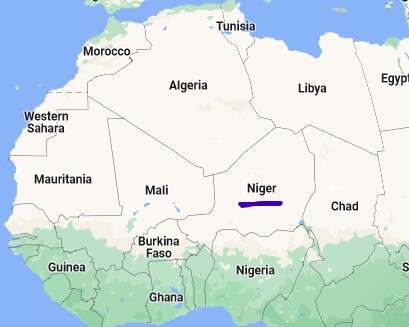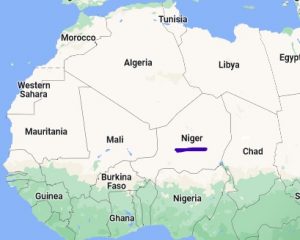Hunger in Niger
by WHES
Niger is one of the countries within the Sahel region on the southern border of the great Sahara Desert in West Africa. Niger rests directly north of Nigeria, and is home to over 24 million people. As the country enters April which this year is the month of Ramadan, it is sobering to observe the current food security conditions in-country.
Niger is bounded by neighboring countries that suffer from Islamist attacks and recent coups. Niger’s rainy and cropping season runs from roughly May-October, and Niger it entering its lean season. This is before the annual harvest at the end of the rains, in October/November 2022. An estimated 4.4 million Nigeriens will be food insecure between June-August 2022 (according to the Cadre Harmonise monitoring system) and the number of food insecure individuals is estimated to be roughly double the numbers seen in 2021. These critical numbers are expected to worsen in the coming months, as the war in Ukraine has already affected world grain supplies, resulting in higher basic food prices within Niger, as well as increases in prices of, fuel and fertilizer which are expected to rise significantly in the coming months.
Malnutrition rates in Niger have not improved significantly in the last ten years and acute malnutrition remains at approximately 10% of children under the age of five. International aid agencies have been responding, including CARE and Catholic Relief Services which are in the middle of five year food and nutrition programs, funded by USAID, in Maradi and Zinder regions, respectively. The World Food Programme has piloted vulnerable adolescent girls with folic acid, iron and school meals, with the finding of significantly increased retention and graduation from schools. The European Union also provides food and humanitarian assistance to Niger.
Niger also hosts over 800,000 internally displaced persons (IDPs), refugees or other uprooted people, and these populations are also food insecure. Niger’s national cereal production for 2021 of ~3.5 million MT decreased by 40% from the previous 5-year average, food prices for its staples of millet, sorghum and maize have so far all increased by ~15% from the previous 5-year average, and are expected to further increase in the coming months as Niger’s lean season progresses. The food supply, combined with low forage supplies for livestock and continued physical insecurity due to Islamist attacks and threats all paint a very challenging picture for the Niger Government and its international partners to respond to these domestic food and physical security needs. The nonprofit Action Contre la Faim, or Action Against Hunger in the U.S., provides nutrition, health and water in southwest and southeast Niger.
hosts over 800,000 internally displaced persons (IDPs), refugees or other uprooted people, and these populations are also food insecure. Niger’s national cereal production for 2021 of ~3.5 million MT decreased by 40% from the previous 5-year average, food prices for its staples of millet, sorghum and maize have so far all increased by ~15% from the previous 5-year average, and are expected to further increase in the coming months as Niger’s lean season progresses. The food supply, combined with low forage supplies for livestock and continued physical insecurity due to Islamist attacks and threats all paint a very challenging picture for the Niger Government and its international partners to respond to these domestic food and physical security needs. The nonprofit Action Contre la Faim, or Action Against Hunger in the U.S., provides nutrition, health and water in southwest and southeast Niger.
Compared to its neighbors, Niger is an island of relative stability due to successful elections last year and a relatively lower Islamist threat than the neighboring countries of Mali and Burkina Faso, though conditions can quickly change. Niger’s continuing food security challenges are similar to hunger challenges throughout the entire Sahel region. Climate change adds to these continuing challenges, linked to land degradation, water access, lower and inconsistent rainfall, high human fertility rates, and low literacy rates, especially for women. Niger remains resilient, but this relatively small country and region, a continent away from Ukraine and eastern Europe, show the far-reaching global effects that current conflict will have on both rich and poor countries, especially those that rely on imported food, fuel and fertilizer to mitigate national food insecurity.
Cadre Harmonise: https://www.ipcinfo.org/ipc-country-analysis/details-map/en/c/1152560/
https://fews.net/west-africa/niger
https://ec.europa.eu/echo/where/africa/niger_en
WFP: https://www.ennonline.net/attachments/2928/FEX_58_Niger_p2.pdf





